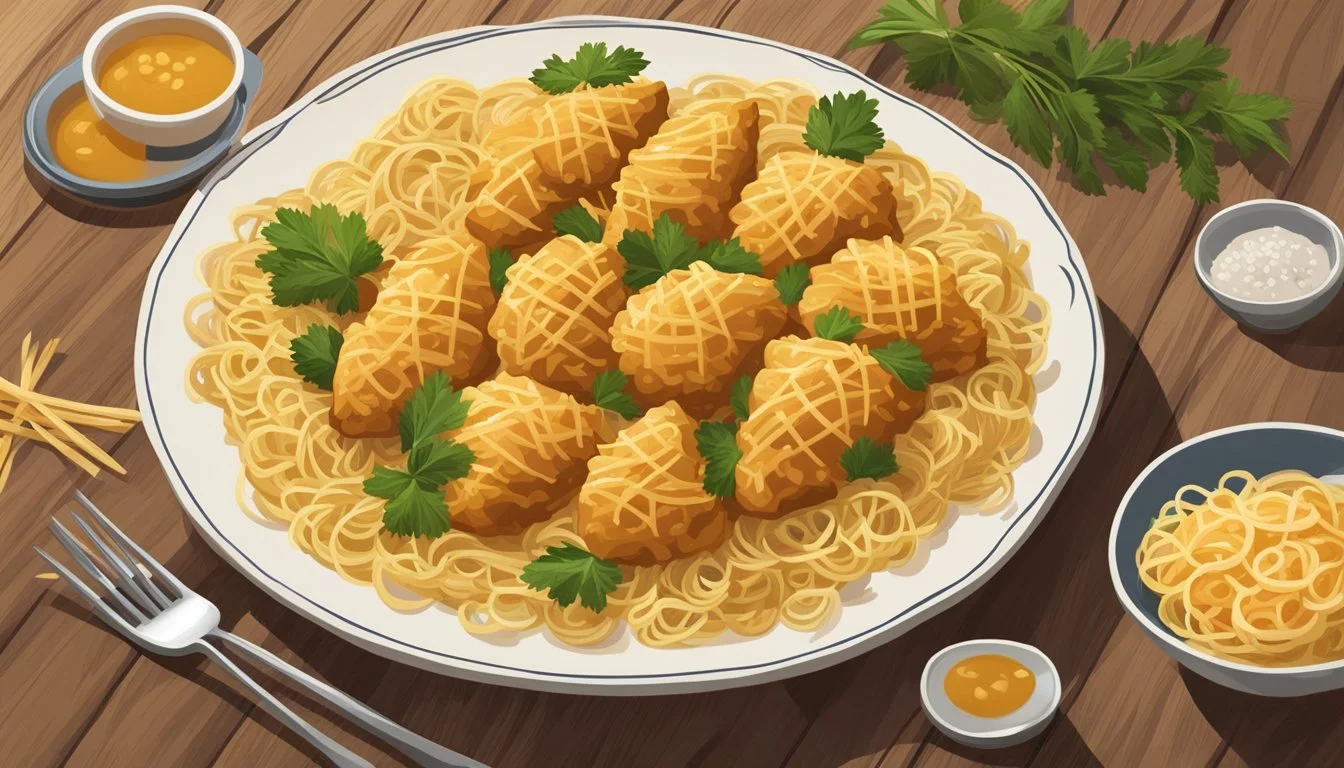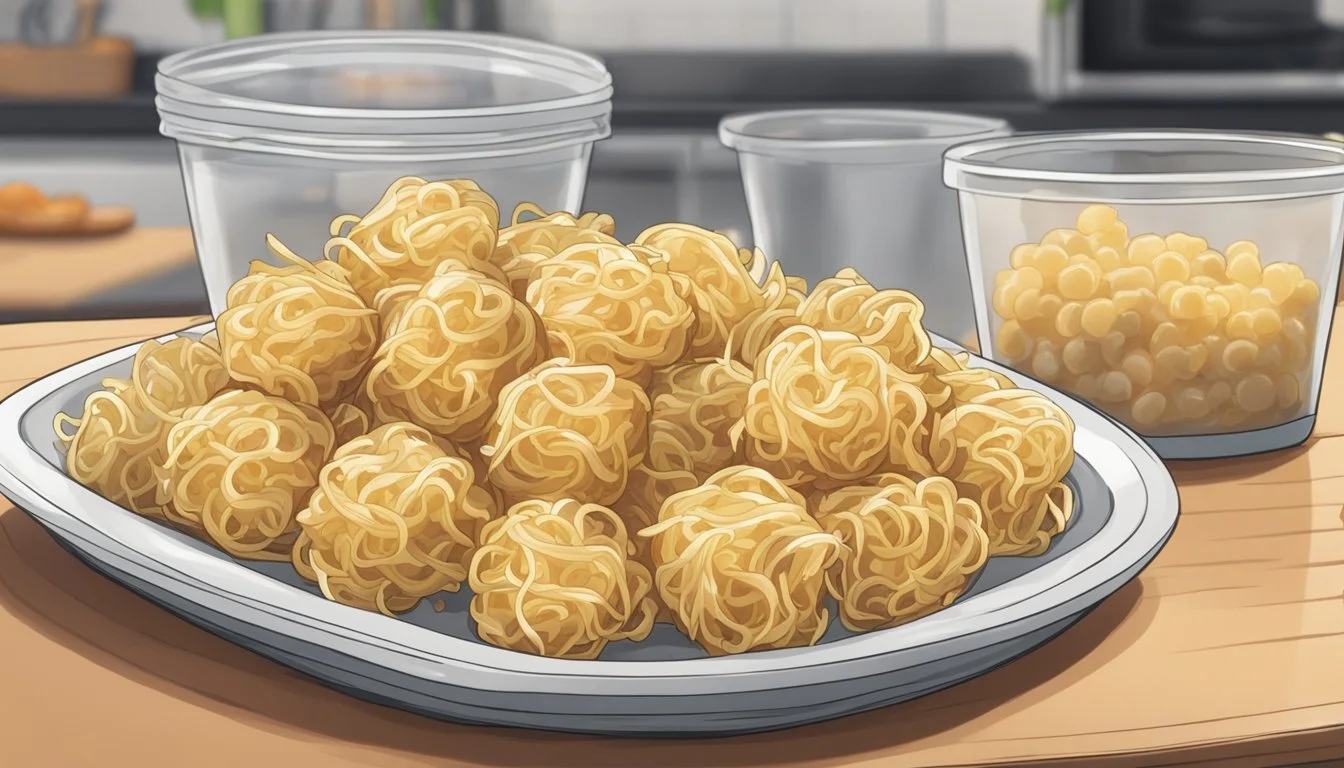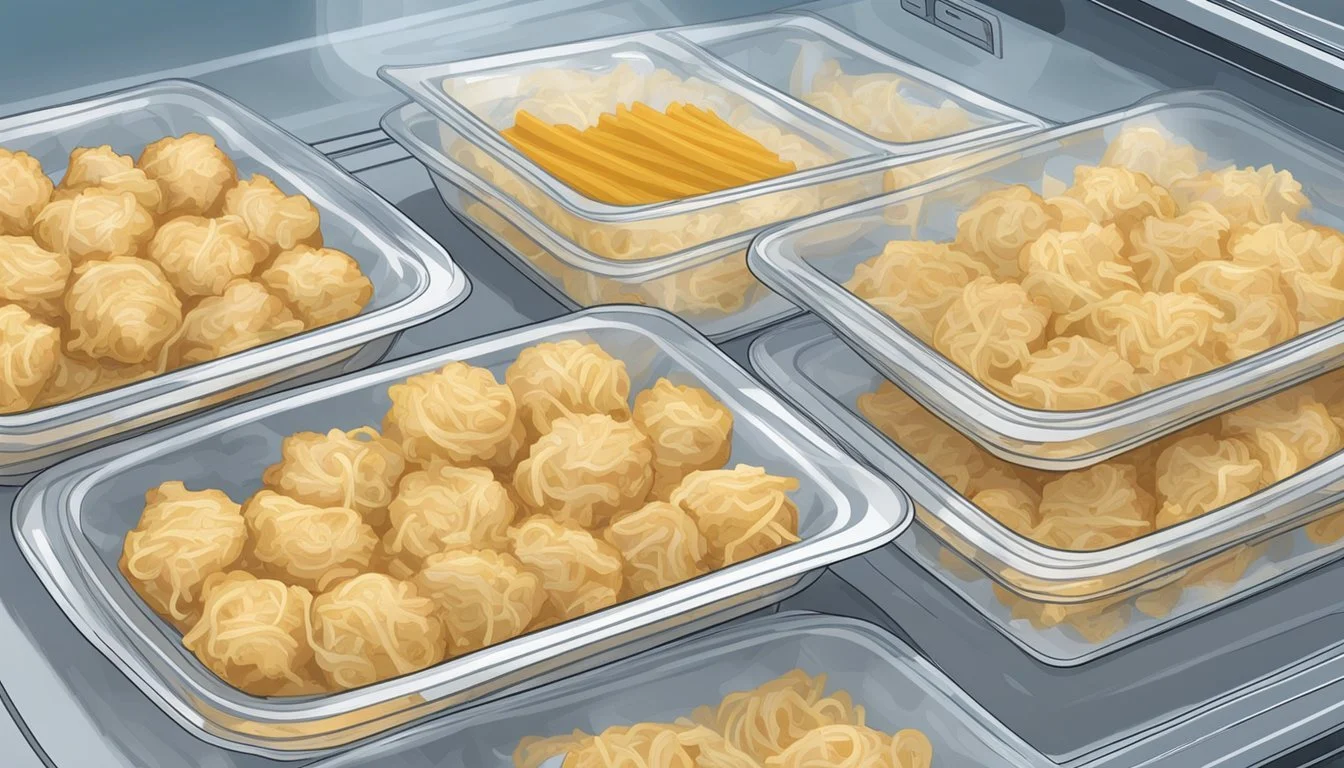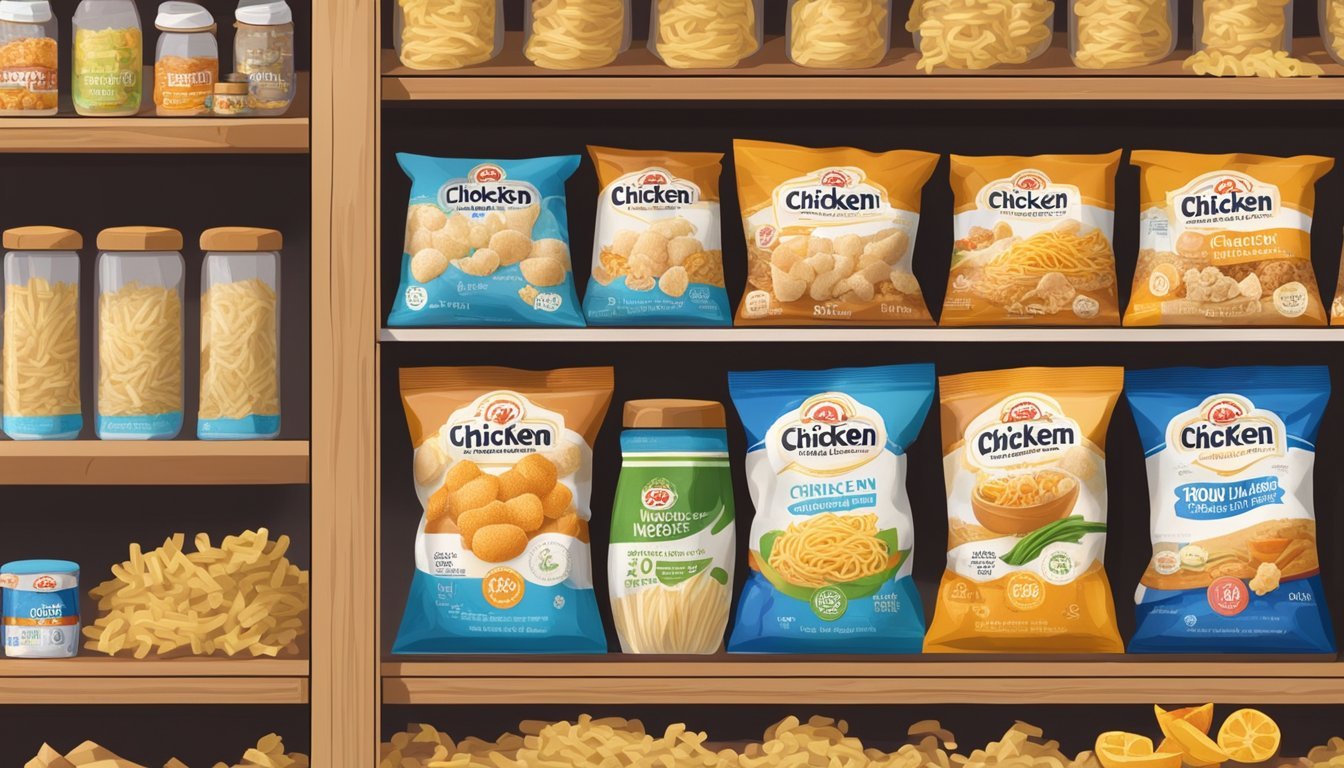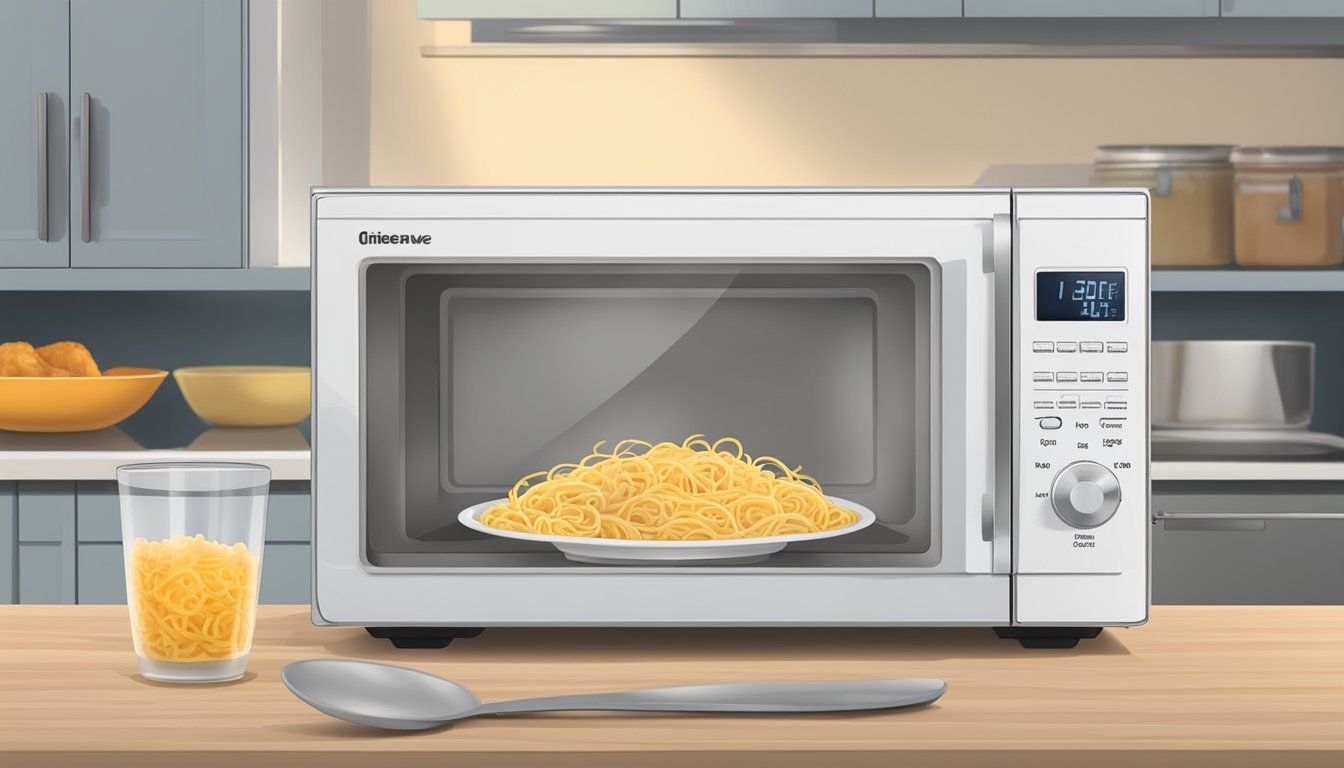How Long Does Chicken and Noodle Bites Last?
Shelf Life and Storage Tips
Chicken and noodle bites make a delicious and convenient meal, but understanding how to store them properly is crucial to maintain both their quality and safety. Cooked chicken and noodle bites last in the fridge for up to four days. Beyond this period, it is safest to freeze any leftovers to prevent foodborne illnesses.
Proper storage not only prolongs the freshness of chicken and noodle bites but also retains their flavors and textures. To store them correctly, place the bites in an airtight container before refrigerating or freezing. This method helps in minimizing bacterial growth and extending their shelf life.
Food safety is paramount when handling any cooked dish. Always reheat chicken and noodle bites to the appropriate temperature before consumption to ensure they are safe to eat. By following these guidelines, you can enjoy your chicken and noodle bites at their best quality.
Understanding Food Safety and Spoilage
Ensuring chicken and noodle bites are safe to eat requires knowing how spoilage occurs and recognizing its signs. Proper storage and handling are key to minimizing risks, such as bacteria growth and food poisoning.
How Spoilage Occurs in Cooked Foods
Spoilage in cooked foods like chicken and noodle bites happens due to bacterial growth. Bacteria thrive in warm temperatures, particularly between 40°F and 140°F, known as the "danger zone."
Improper storage, such as leaving food out too long, accelerates spoilage. Refrigeration at or below 40°F significantly slows bacterial growth, while freezing at 0°F can halt it entirely.
Humidity and exposure to air also contribute to spoilage. Use airtight containers to reduce exposure and keep food safe longer. Spoiled food not only tastes bad but poses serious health risks, including food poisoning.
Recognizing Signs of Spoilage
Identifying spoilage early helps prevent foodborne illnesses. Visual changes are often the first indicators; look for mold or discoloration. Odor changes are also crucial; spoiled chicken and noodle bites can emit a sour or foul smell.
Texture changes may include sliminess or a mushy consistency, signaling contamination. If in doubt, it's safer to discard the food. Missteps in storage or preparation can increase spoilage risk, so always check expiration dates and follow storage guidelines.
By knowing these signs, individuals can avoid the dangers associated with spoiled food, ensuring they consume meals safely.
Proper Storage Techniques
To ensure the freshness and safety of chicken and noodle bites, proper storage methods are essential. Key techniques include using airtight containers, refrigerating promptly, and freezing for long-term storage.
Storing Freshly Cooked Chicken and Noodle Bites
Freshly cooked chicken and noodle bites should be cooled to room temperature before being stored. Refrigeration is the most common storage method. Place the bites in an airtight container to prevent bacteria growth. Label the container with the date to keep track of freshness. Store the bites in the refrigerator for 3-4 days at a temperature below 40°F (4°C) to prevent spoilage.
Extending Shelf Life with Freezing
Freezing chicken and noodle bites can significantly extend their shelf life. First, ensure the bites have cooled to room temperature. Use freezer-safe containers or heavy-duty freezer bags to avoid freezer burn. Remove as much air as possible before sealing. Label the containers with the date. Frozen chicken and noodle bites can last up to 2-3 months in a freezer set at 0°F (-18°C).
Food Storage Containers and Airtightness
Choosing the right container is crucial for maintaining the quality of chicken and noodle bites. Use containers with tight-fitting lids to ensure airtightness. Glass and BPA-free plastic containers are excellent options. Vacuum-sealing can provide an extra layer of protection by removing air, thus prolonging shelf life. Always check containers for any damage or warping that could compromise their seal.
Guidelines for Refrigerating Chicken Dishes
Proper refrigeration is crucial to maintaining the freshness and safety of chicken dishes. Knowing the right temperature and consumption periods ensures that leftovers remain delicious and safe to eat.
Ideal Refrigerator Temperature for Storage
Chicken dishes should be stored in a refrigerator set to 40°F (4°C) or below. This temperature slows bacterial growth and helps maintain the freshness of the cooked food. Use a refrigerator thermometer to monitor the temperature accurately.
It's advised to store chicken dishes in airtight containers to prevent contamination and keep odors from affecting other food items. Making sure the containers are properly sealed also helps maintain moisture, ensuring the chicken doesn't dry out.
Determining Safe Consumption Periods
Cooked chicken, including chicken and noodle bites, should be consumed within 3 to 4 days of refrigeration. This guideline is supported by FoodSafety.gov and the USDA.
It's critical to refrigerate leftovers within two hours of cooking to minimize bacterial proliferation. After packaging the chicken properly, mark the containers with storage dates to keep track of freshness and avoid spoilage.
These practices ensure the safety and quality of your refrigerated chicken dishes, allowing you to enjoy them without worry.
Freezing and Defrosting Methods
Proper freezing and defrosting techniques are crucial for maintaining the quality and safety of chicken and noodle dishes. By paying attention to the details of food storage and thawing, you can ensure your leftovers remain as delicious and nutritious as when they were freshly made.
Best Practices for Freezing Chicken and Noodles
Separately Freeze Components: For optimal texture, freeze chicken and broth separately from the noodles. This prevents noodles from becoming mushy during thawing.
Al Dente Cooking: Cook the noodles just under al dente before freezing. This ensures that they maintain their structure when reheated.
Proper Packaging: Use airtight containers or ziplock bags to prevent freezer burn. Label the containers with the date to keep track of storage times.
Storage Duration: According to the USDA, cooked chicken can be frozen for up to 2-6 months, while cooked noodles can last for about 2 months. Freezing them separately can extend their shelf life.
Thawing Techniques for Frozen Chicken Dishes
Refrigerator Thawing: Place frozen chicken and noodles in the refrigerator for slow thawing. This method can take 24 hours but is the safest way to maintain texture and taste.
Cold Water Method: For quicker thawing, submerge the sealed bag of chicken and noodles in cold water. Change the water every 30 minutes. This process usually takes a few hours.
Microwave Thawing: Use the defrost setting on your microwave for a fast option. Be cautious as this can start to cook the edges of the food if not monitored closely.
Avoid Room Temperature Thawing: Do not thaw chicken or noodles on the counter. This can lead to bacterial growth and potential food poisoning.
By following these freezing and defrosting methods, you can enjoy your chicken and noodle dishes for months after originally preparing them.
The Role of Ingredients in Food Longevity
The longevity of chicken and noodle bites heavily depends on their ingredients. Understanding which components contribute to a longer or shorter shelf life can help in making more informed choices when preparing or storing food.
How Different Ingredients Affect Shelf Life
Meat: Chicken, especially when cooked, tends to spoil faster due to its moisture content and susceptibility to bacterial growth. Using rotisserie chicken can reduce this, as it’s often pre-cooked and seasoned with preservatives.
Vegetables: Fresh vegetables have varying shelf lives. Leafy greens and soft vegetables spoil faster compared to root vegetables like carrots or potatoes, which can last longer in the fridge. Adding more durable vegetables can extend the longevity of the dish.
Pasta and Noodles: Cooked pasta and noodles can last 3-5 days in the refrigerator when stored in airtight containers. Dry pasta can last much longer, but once cooked, its shelf life shortens significantly.
Sodium and Preservatives: Higher sodium levels can act as preservatives, helping to extend the shelf life of various dishes. Processed foods often contain higher amounts of sodium, contributing to longer preservation periods.
Adjusting Recipes for Longer Lasting Meals
Choosing Ingredients: Opt for ingredients with longer shelf lives. Use root vegetables over leafy greens, and consider using rotisserie chicken for its longer lasting properties.
Storage Methods: Proper storage is crucial. Airtight containers minimize bacterial exposure and moisture loss, helping to keep food fresh.
Adding Preservatives: Incorporate natural preservatives like vinegar or lemon juice into recipes. These not only add flavor but also improve longevity.
Temperature Control: Maintaining a consistent, cool temperature is paramount in preserving food. Ensure the refrigerator is set at the appropriate temperature (around 40°F or 4°C).
In conclusion, by carefully selecting and managing ingredients, the shelf life of chicken and noodle bites can be significantly improved. This allows for safer consumption over an extended period and reduces food waste.
Reheating Stored Meals Safely
Properly reheating stored meals is essential for maintaining quality and avoiding foodborne illnesses. Key factors include temperature control, preservation of texture and flavor, and using the appropriate reheating method for different types of chicken dishes.
Maintaining Quality and Flavor During Reheating
Reheating can sometimes affect the texture and flavor of stored meals. To minimize these effects, it’s crucial to use the right techniques and monitor temperatures carefully. Reheat meals until they reach an internal temperature of at least 165°F (74°C) to ensure safety.
Covering dishes while reheating helps retain moisture and prevents drying out. Stirring food, especially soups and sauces, ensures even heating and prevents cold spots. For chicken noodle bites, reheating in small batches helps maintain the original texture and flavor.
Methods for Reheating Various Chicken Dishes
Different chicken dishes benefit from specific reheating methods. For example, chicken noodle bites can be reheated using the microwave, stovetop, or oven.
Microwave: Place the chicken noodle bites in a microwave-safe dish. Cover it loosely and heat on medium power. Stir halfway through the reheating process to ensure even heating.
Stovetop: For stovetop reheating, use a non-stick pan over medium heat. Add a splash of water or broth to prevent sticking. Stir frequently to maintain a uniform temperature throughout.
Oven: Preheat the oven to 350°F (175°C). Place the chicken noodle bites in an oven-safe dish and cover with foil. Heat for about 20 minutes or until the internal temperature reaches 165°F (74°C).
By choosing the right method, it's possible to reheat stored chicken dishes safely while preserving as much of their original quality as possible.
Understanding Date Labeling and Food Safety
Date labeling is crucial for determining the freshness and safety of food products. Key terms like expiration dates and sell-by dates help consumers make informed choices.
Interpreting Expiration and Sell-By Dates
Expiration dates indicate the last date at which a product is expected to be consumed at peak quality. Items like infant formula have a "use by" date, which is federally required by the FDA for safety reasons.
Sell-by dates guide retailers on how long to display the product. It is mainly used for stock rotation and does not necessarily mean that the product is unsafe to consume after this date. For consumers, it's best to evaluate fresh items using sensory cues like smell and appearance, especially past the sell-by date.
Foodkeeper and USDA Guidelines
The USDA provides essential guidelines for food safety and quality. While they do not mandate quality or food safety dates for all products, they require a "pack date" for certain items like poultry and canned goods to facilitate traceability.
The FoodKeeper app, developed in collaboration with the USDA, offers detailed storage advice. For example, cooked chicken should ideally be consumed within 3-4 days when refrigerated. This tool can assist in preventing foodborne illnesses by adhering to recommended storage times and best practices for various foods.
Signs That Chicken and Noodle Bites Have Gone Bad
Identifying spoiled chicken and noodle bites involves noticing changes in appearance, smell, and texture. Consuming spoiled food poses health risks that should not be underestimated.
Visual and Olfactory Indicators of Spoiled Food
Appearance: Fresh chicken bites will have a light pink color and noodles should be a consistent hue without dark spots. If the chicken appears gray, green, or if mold is visible, discard it immediately.
Smell: Spoiled chicken typically emits a sour or ammonia-like odor. Fresh chicken bites will not have a strong smell. If an unpleasant odor is detected, it is best to avoid consuming it.
Texture: Fresh chicken should feel firm. Sliminess or a sticky feel on the chicken or noodles is a sign of spoilage. Trust your senses; if it feels off, consider it unsafe.
Health Risks Associated with Consuming Spoiled Food
Eating spoiled chicken bites can lead to foodborne illnesses. Harmful bacteria such as Salmonella and E. coli can thrive in spoiled food. Symptoms of foodborne illness include stomach cramps, diarrhea, vomiting, and fever.
Prevention: Always store chicken and noodle bites in the refrigerator at or below 40°F (4°C) and consume within three days. Proper storage significantly reduces the risk of illness.
Consumption: If recently cooked bites are not consumed within a safe period or proper storage conditions, they can quickly become hazardous. Avoid taking chances with questionable food to protect your health.
Preventing Food Waste with Smart Consumption
By adopting practical strategies and mindful habits, individuals can effectively reduce food waste and optimize the consumption of their leftovers.
Planning and Tracking to Minimize Waste
Creating a detailed meal plan aids in avoiding over-purchasing and ensures the consumption of perishable items. Planning meals around the existing inventory helps in utilizing leftovers and near-expiry products first. Shopping lists based on meal plans further prevent impulse buys.
Developing an inventory system using labels and dates makes tracking food items easier. Individuals can use containers to store chicken and noodle bites, clearly marked with preparation dates, to monitor freshness.
Portion control is vital. Preparing smaller amounts caters better to actual consumption needs and limits surplus food. Utilizing apps or digital tools can assist in maintaining a virtual pantry, reminding users of items needing prompt usage.
Safe Sharing and Donation Practices
When leftovers or surplus food are safe to consume but exceed personal needs, sharing with family or neighbors is a practical solution. It supports communal ties while reducing food waste. Organizing regular 'leftover nights' can make meal-sharing enjoyable and sustainable.
For items that remain unused, donating to local food banks or shelters is an ethical choice. Following guidelines for safe food donation ensures that donated items are fresh and beneficial. It's crucial to check donation facility requirements, as some might have specific conditions for prepared foods like chicken and noodle bites.
In summary, integrating these practices encourages sustainable consumption and significantly reduces food waste at home.

